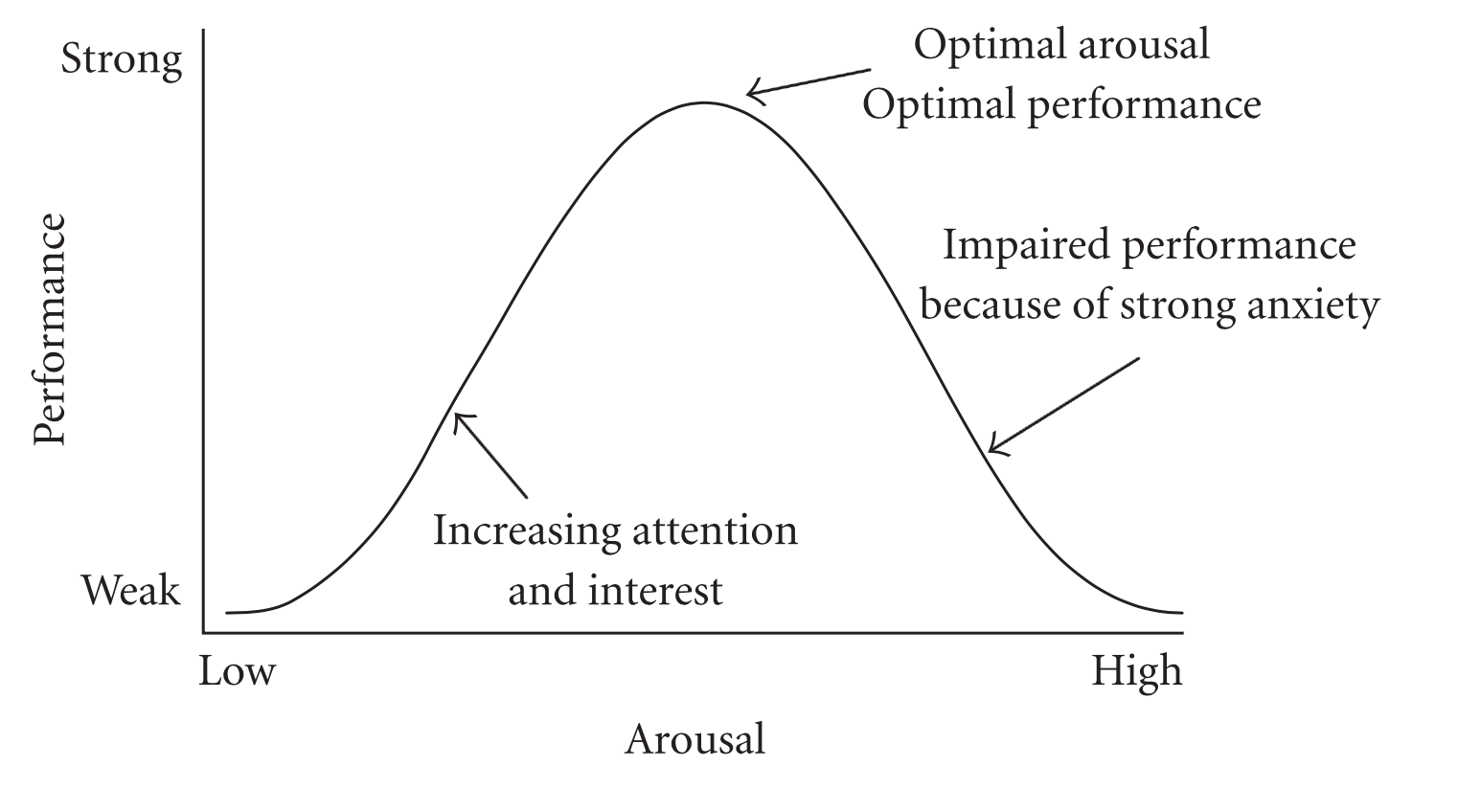The Bell Curve For Optimal Performance
Too Bored. Too Stressed. Just Right.

Soon after graduating from college, I started working as a mechanical engineer. Early into my career, I was responsible for the mechanical and thermal design of a new product.
I not only had to design this new product but also get familiar with company processes and tools.
Management gave me roughly 3 months to prepare for a presentation of my initial design to them. I felt overwhelmed.
During this time, I found myself very focused since the work was challenging and I was determined to accomplish it until... the tasks kept adding up and I burned out from all the stress.
Stress is something we deal with on what feels like a daily basis both at work and outside it. Stress can help us boost our performance, but too much of it can cause us to get burned out.
It is important to reflect on how much stress is in our life. One simple way to do this is to have a visual understanding of where you are in the Yerkes-Dodson Law bell curve.

The bell curve is a good way to visualize where you are in the amount of stress and/or mental engagement you have.
Medium Arousal / High Performance = Optimal Area
In the optimal area, you may find yourself working on a mentally engaging assignment. Whether it be from the stress, very interesting work, or a mixture of the two. In this state, your work output is at or near your best and you may find the work days go by so fast.
Low Arousal / Weak Performance = Boredom Area
In the boredom area, you may find yourself working on a dull assignment with no set deadline. You are not learning and not feeling challenged. The workdays may feel like they are longer than they are. Your performance at wrapping up the workday may be at an all-time high though.
High Arousal / Weak Performance = Burnout Area
In the burned-out area, you may find yourself working on very challenging and/or a lot of assignments. You feel anxious about what is on your plate. Energy and morale are very low. You are close to or experience burnout in this area.
Approaches To Move Closer To The Optimal Area
From Boredom To Optimal Area
To move from the boredom area towards the optimal area, start by talking to your manager/team lead. Discuss with them that you want to take more responsibility and/or point out projects you would like to work on.
Another thing you can do to move towards the optimal area is to set short time limits to complete dull tasks. This will create a challenge for you which in turn may spark some mental engagement. With the increase in mental engagement, your performance may increase.
From Burn Out To Optimal Area
To move from the burnout area towards the optimal area, talk to your manager/team lead to let them know you need help. Discuss the situation and brainstorm a way to come up with a solution.
If you find yourself getting more and more assignments, try to put a stop to it by saying no in a respectful way. One way to say no is to let the person know of all the tasks you are working on. If this new task is so urgent, ask them which task should you drop so this new one can take its place.
Conclusion
In our careers, we work on a variety of assignments. Some are interesting and others are dull. There may be periods of time in which you may find yourself being on one of the two ends of the bell curve for far too long. Either bored out of your mind or burned out. Both of which result in a decrease in your work performance.
We need to check in with ourselves to make sure we get as close to an optimal area of performance as possible. Reflect on where you stand on the bell curve. Next, see what steps you can take that help you go towards the optimal area of the bell curve.
It is a win for you and most likely a win for your employer as well.
Call To Action
Answer the following questions:
- Where do you feel you are on the bell curve?
- Why do you feel you are at that point in the bell curve?
- What can you do to move closer to the optimal performance area (if not already in that area)?